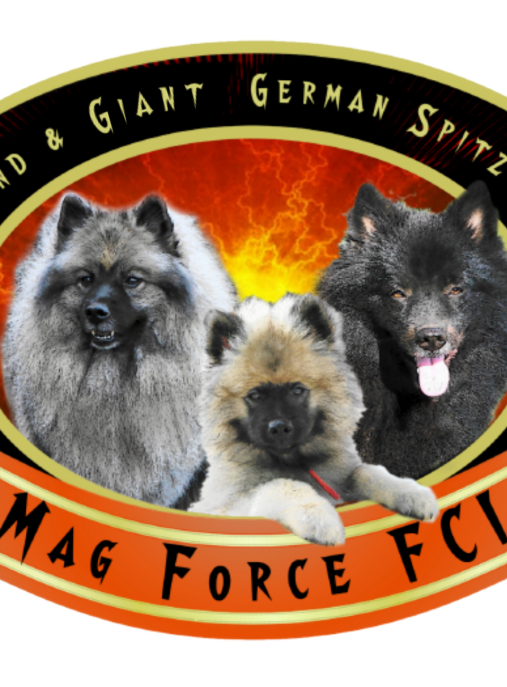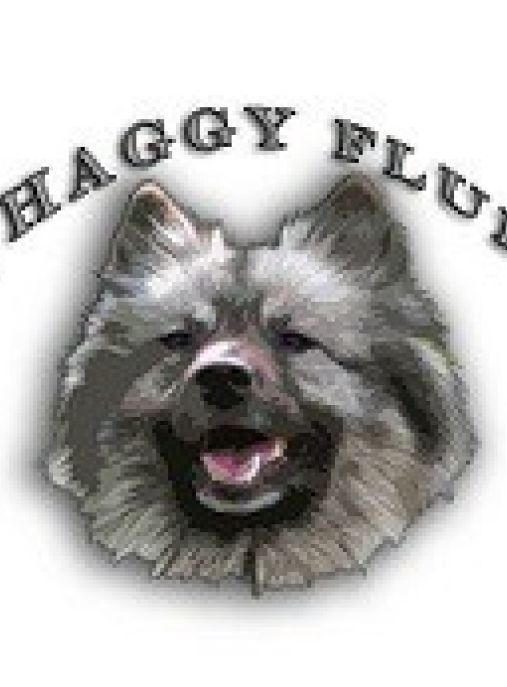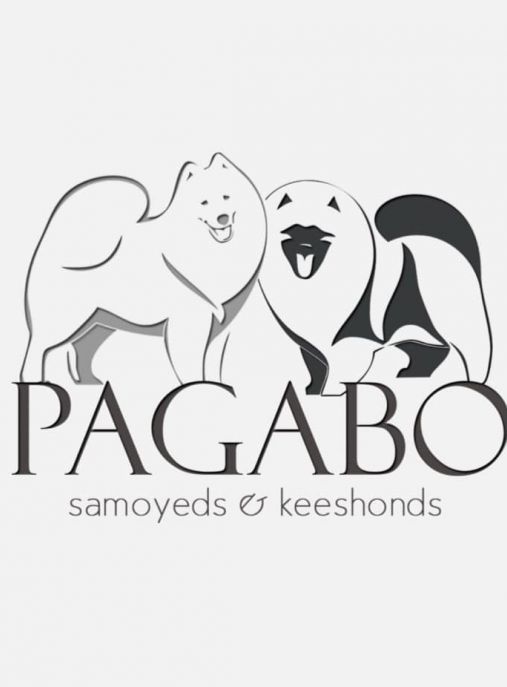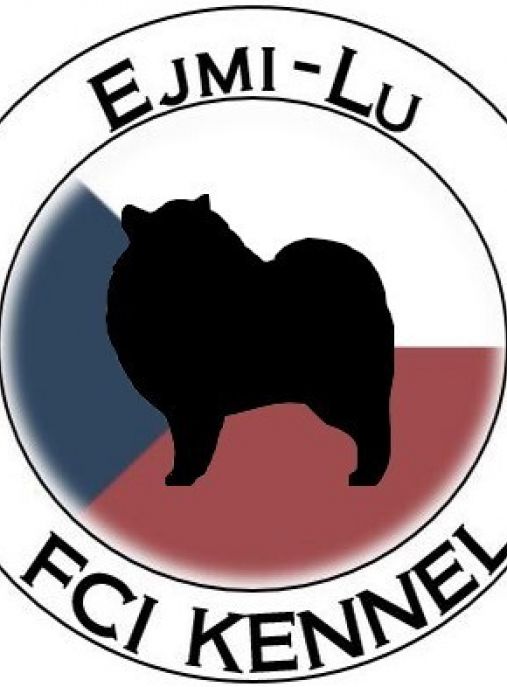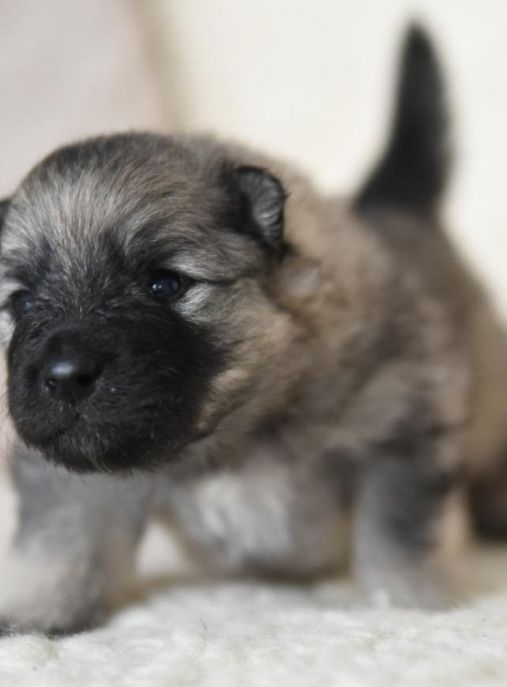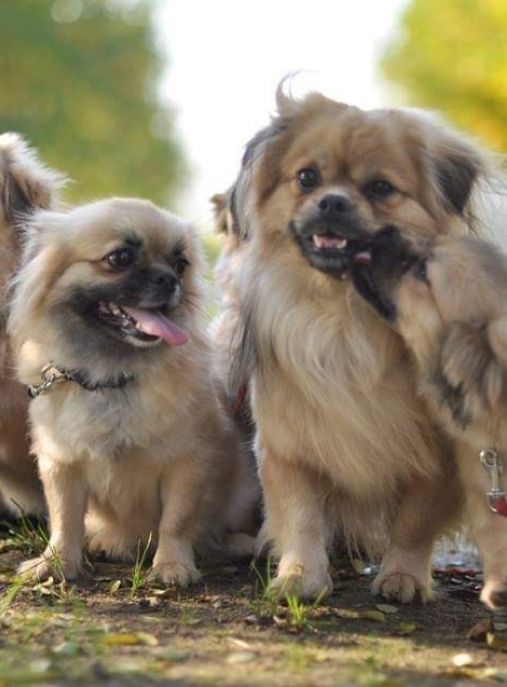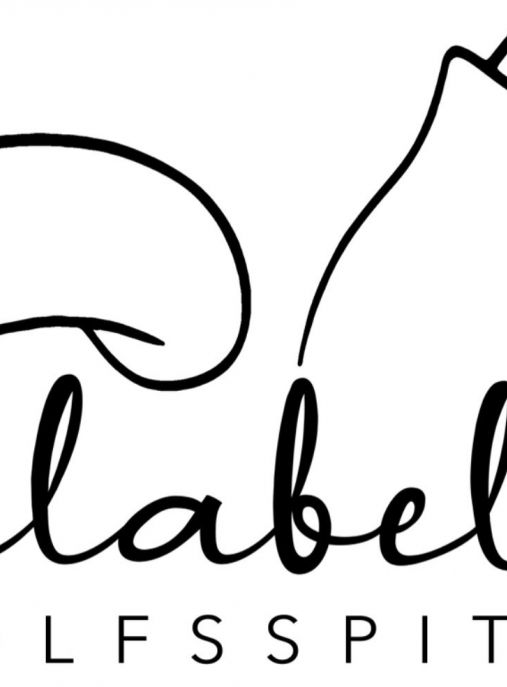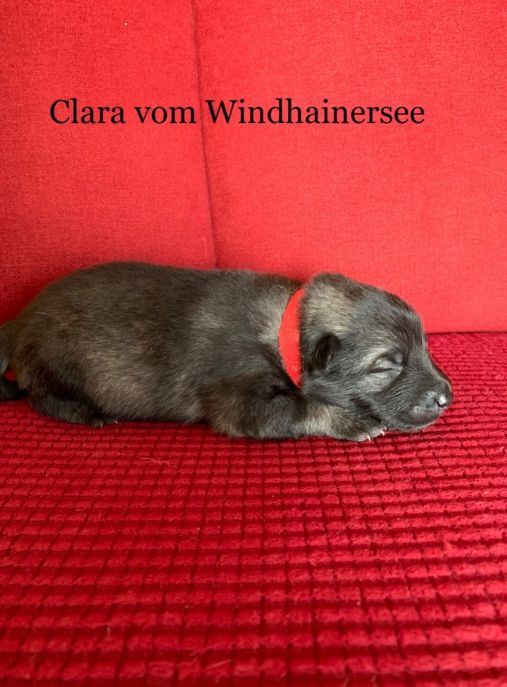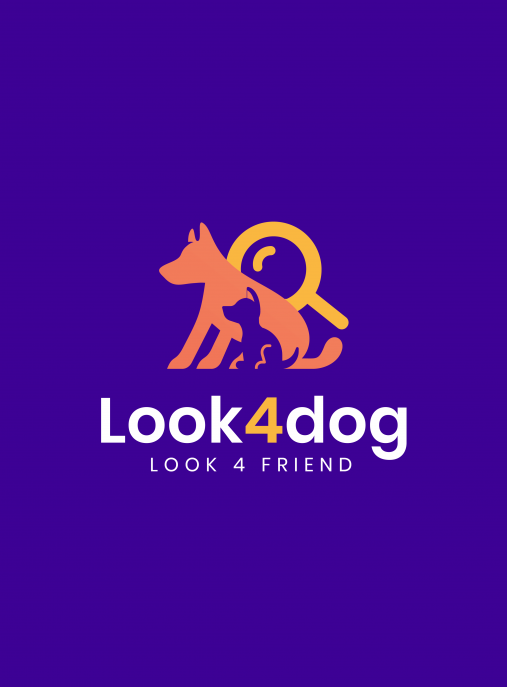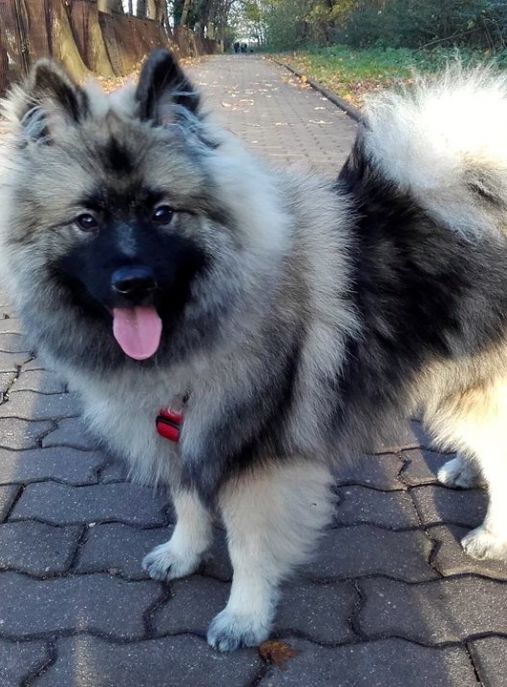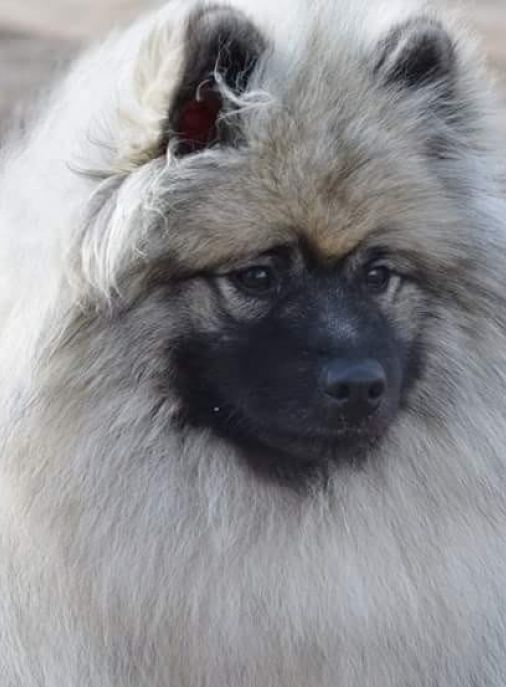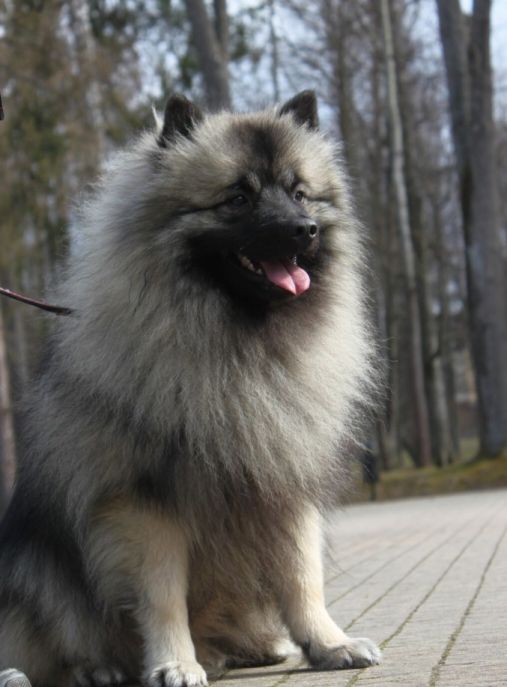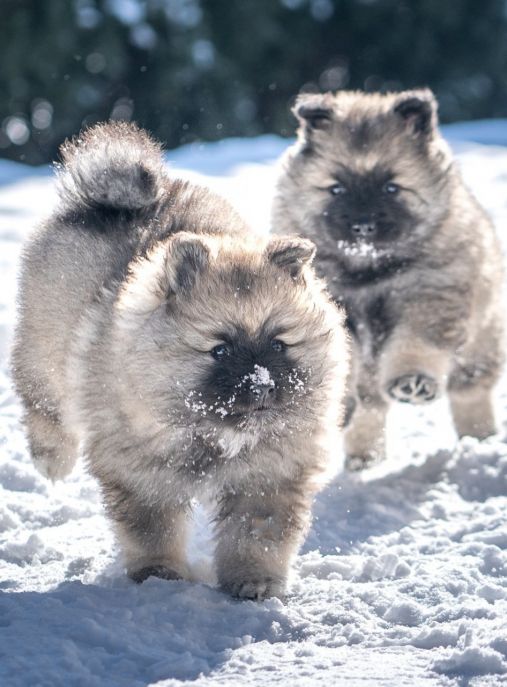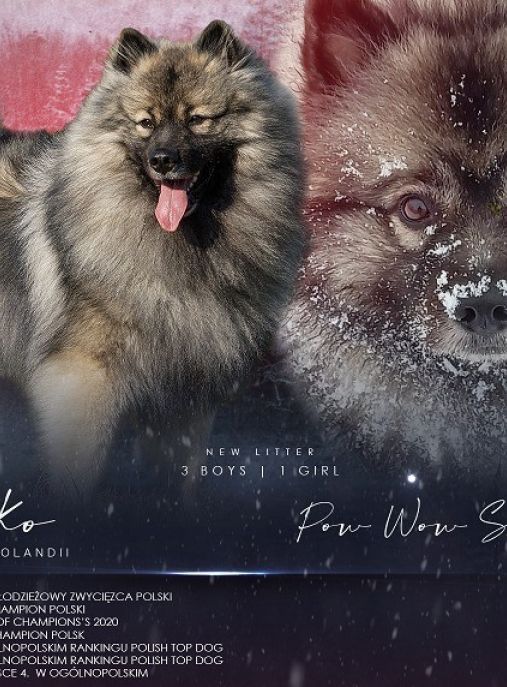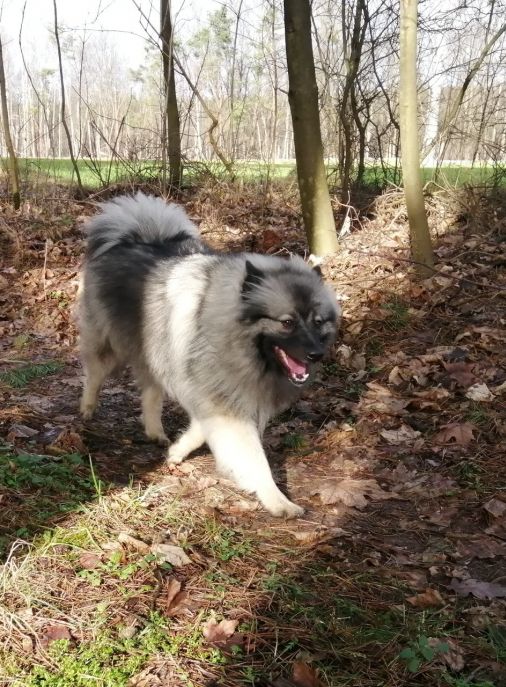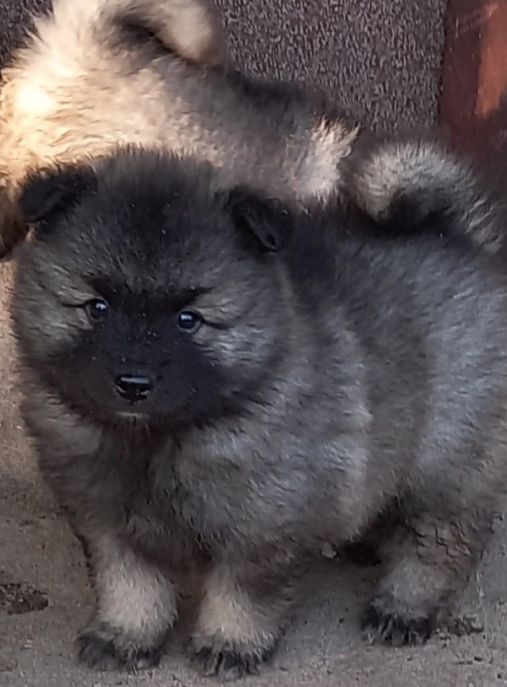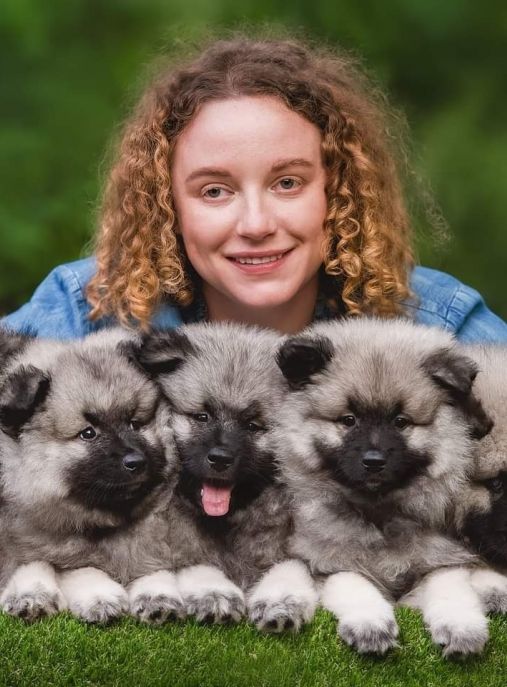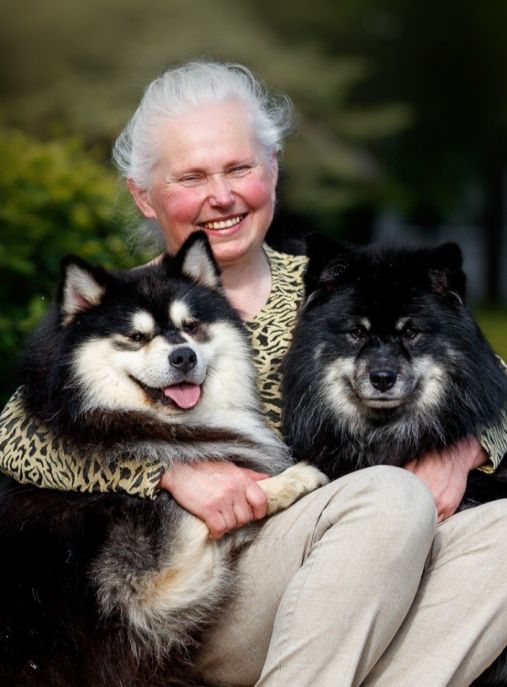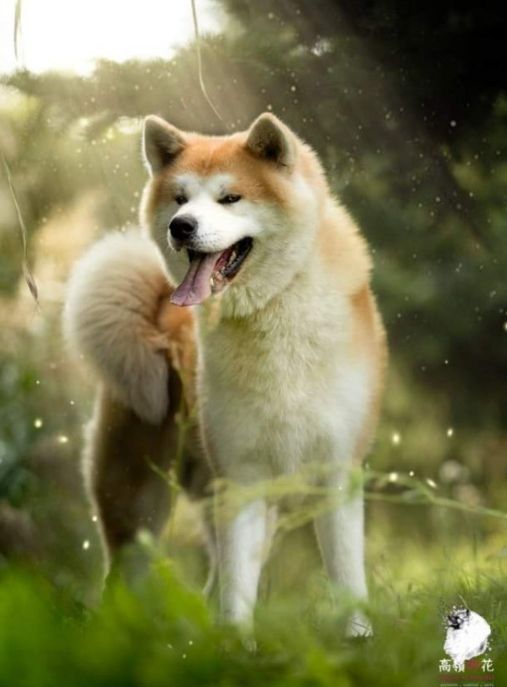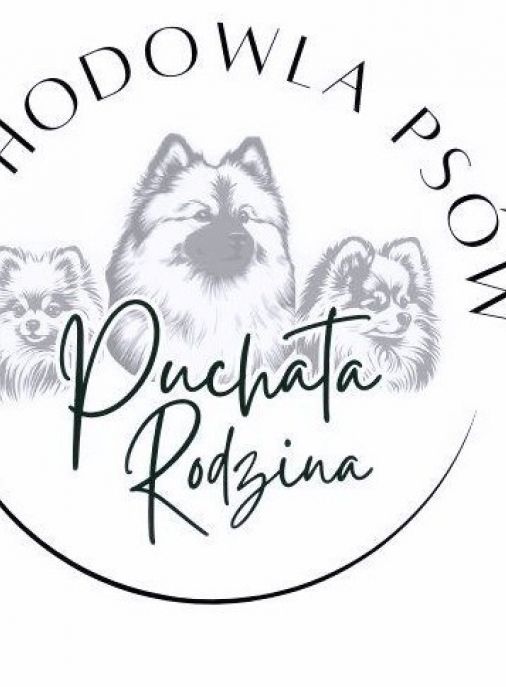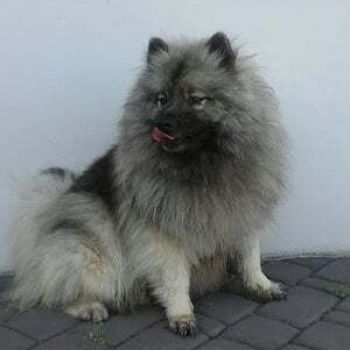The Keeshond, also known as the Wolfspitz or German Spitz, is a medium-sized dog breed that is known for its beautiful, thick coat and friendly, affectionate nature. This breed is a member of the Spitz family and is classified under the FCI typology as Group 5, Section 4: European Spitz. Keeshonds are versatile dogs that excel in various roles, including being a loving family companion, a therapy dog, and even a competitive show dog.
The history of the Keeshond breed can be traced back to the Netherlands, where they were originally bred as working dogs on riverboats and barges. These dogs were highly valued for their ability to guard the boats and their cargo, as well as for their companionship. The breed's name is derived from Cornelis (Kees) de Gyselaer, a Dutch patriot who owned a dog named Kees, which became the symbol of the Dutch Patriot Party in the late 18th century.
According to the FCI typology, the Keeshond belongs to Group 5: Spitz and Primitive Types, Section 4: European Spitz. This group includes other Spitz breeds such as the Samoyed, Norwegian Elkhound, and Finnish Lapphund. These breeds share common characteristics, including a thick double coat, erect ears, and a curled tail carried over the back.
Keeshonds are known for their friendly and outgoing nature, making them excellent family dogs. They are highly sociable and get along well with children and other pets. Their intelligence and eagerness to please make them relatively easy to train, although they can be a bit stubborn at times. Keeshonds thrive on human companionship and do not do well when left alone for long periods.
In terms of physical appearance, Keeshonds are medium-sized dogs with a sturdy build. They have a distinctive double coat that consists of a dense, soft undercoat and a longer, harsh outer coat. The coat forms a thick mane around the neck and chest, giving them a lion-like appearance. The coat color is typically a mixture of gray, black, and cream, with a characteristic "spectacle" pattern around the eyes.
On average, male Keeshonds weigh between 35-45 pounds (16-20 kg), while females weigh slightly less, ranging from 30-40 pounds (14-18 kg). The height at the shoulder for both males and females is around 17-18 inches (43-46 cm). Keeshonds have a moderate lifespan, typically living between 12-15 years with proper care and nutrition.
One interesting fact about Keeshonds is their expressive and alert eyes. Their dark, almond-shaped eyes give them an intelligent and mischievous look. They are known for their "smiling" expression, which is a result of the slight upturn of their lips. This unique feature adds to their charm and endears them to their owners.
Another interesting characteristic of Keeshonds is their vocal nature. They are known for their distinctive "bark" or "howl," which they use to communicate with their owners. This trait made them excellent watchdogs in their early history, as they would alert their owners to any potential danger or intruders.
In conclusion, the Keeshond, also known as the Wolfspitz or German Spitz, is a versatile and friendly dog breed that excels as a family companion, therapy dog, and show dog. With their beautiful coat, friendly nature, and expressive eyes, they are sure to capture the hearts of anyone who meets them. Whether as a loyal family pet or a competitive show dog, the Keeshond is a breed that brings joy and companionship to its owners.
The Keeshond, also known as the Wolfspitz or German Spitz, is a breed of dog that is known for its distinctive appearance and charming personality. These dogs have a unique character that sets them apart from other breeds, making them a popular choice for families and individuals alike.
In terms of their behavior, Keeshonds are known to be extremely friendly and affectionate. They are loyal and devoted to their families, making them excellent companions and watchdogs. They are known to be good with children and other pets, making them a great choice for families with multiple animals.
One of the most notable traits of the Keeshond is their intelligence. They are highly trainable and eager to please their owners. This makes them a great choice for obedience training and various dog sports. However, it is important to note that they can be sensitive to harsh training methods, so positive reinforcement techniques work best with this breed.
Keeshonds are also known for their playful and energetic nature. They love to be involved in various activities and enjoy regular exercise. Daily walks, playtime, and mental stimulation are essential for their overall well-being. They are not typically high-energy dogs, but they do require regular exercise to prevent boredom and destructive behavior.
When it comes to raising and training a Keeshond, consistency and positive reinforcement are key. They respond well to praise, treats, and rewards, so using these methods during training sessions will yield the best results. Early socialization is also crucial to ensure they grow up to be well-rounded and confident dogs.
Keeshonds are known to be vocal dogs and are not afraid to express themselves. They have a tendency to bark, which can be a challenge for some owners. Proper training and socialization from an early age can help minimize excessive barking. It is also important to note that Keeshonds thrive on human companionship and can become anxious or develop separation anxiety if left alone for long periods.
In terms of grooming, Keeshonds have a thick double coat that requires regular brushing to prevent matting and to keep their fur looking its best. They shed moderately throughout the year and have a heavier shedding period twice a year. Regular grooming sessions and occasional baths are necessary to maintain their coat's health and appearance.
Overall, the Keeshond is a delightful breed with a charming character. They are intelligent, friendly, and make excellent family pets. With proper training, socialization, and exercise, they can thrive in various living situations. If you are looking for a loyal and affectionate companion, the Keeshond may be the perfect choice for you.
The Keeshond, also known as the Wolfspitz or German Spitz, is a beautiful and intelligent breed that requires proper care to ensure their well-being. Here is an extensive description of the recommended care for Keeshond dogs, including tips on what to do and what not to do:
1. Grooming: Keeshonds have a thick double coat that requires regular grooming. Brush their fur at least two to three times a week to prevent matting and remove loose hair. During shedding seasons, daily brushing is necessary. Avoid shaving their coat as it provides insulation from both heat and cold.
2. Bathing: Bathe your Keeshond only when necessary, as excessive bathing can strip their coat of natural oils. Use a mild dog shampoo and ensure thorough rinsing to prevent skin irritation. After bathing, dry their coat completely to avoid dampness, which can lead to skin problems.
3. Exercise: Keeshonds are an active breed and require regular exercise to stay healthy and mentally stimulated. Aim for at least 30-60 minutes of exercise daily, which can include walks, playtime, or interactive games. They also enjoy activities like agility training and obedience classes.
4. Socialization: Keeshonds are friendly and sociable dogs that thrive on human companionship. Socialize them from an early age by exposing them to various people, animals, and environments. This helps prevent shyness or aggression towards strangers or other animals.
5. Training: Keeshonds are highly intelligent and eager to please, making them relatively easy to train. Use positive reinforcement techniques such as treats, praise, and rewards to motivate them. Consistency and patience are key, as they can be sensitive to harsh training methods.
6. Mental Stimulation: Keeshonds have an active mind and need mental stimulation to prevent boredom and destructive behavior. Provide them with puzzle toys, interactive games, and training sessions to keep their minds engaged. They excel in activities like obedience, rally, and even canine sports like agility or flyball.
7. Health Care: Regular veterinary check-ups are essential to ensure your Keeshond's overall health. Vaccinations, parasite prevention, and dental care should be part of their routine. Keeshonds are prone to certain health issues like hip dysplasia, patellar luxation, and autoimmune disorders, so early detection and proper management are crucial.
8. Diet: Feed your Keeshond a balanced and high-quality diet that meets their nutritional needs. Consult your veterinarian for specific dietary recommendations based on their age, activity level, and any health concerns. Avoid overfeeding, as Keeshonds can be prone to obesity.
9. Climate Considerations: Keeshonds have a thick coat that provides insulation, making them more suited to cooler climates. In hot weather, ensure they have access to shade, fresh water, and avoid exercising them during the hottest parts of the day. Be cautious of overheating, as they can be more susceptible due to their dense coat.
What not to do:
1. Do not leave your Keeshond alone for extended periods. They thrive on human companionship and can develop separation anxiety if left alone for too long.
2. Do not use harsh training methods or punishment-based techniques. Keeshonds respond best to positive reinforcement and gentle guidance.
3. Do not neglect their dental care. Regular brushing and professional cleanings are important to prevent dental diseases.
4. Do not skip regular exercise. Lack of physical activity can lead to weight gain and behavioral issues.
5. Do not ignore signs of health problems. Early detection and prompt veterinary care are crucial for a healthy Keeshond.
By following these care tips and avoiding common mistakes, you can provide your Keeshond with a happy, healthy, and fulfilling life. Remember, each dog is unique, so adapt the care routine to suit their individual needs and preferences.
The Keeshond, also known as the Wolfspitz or German Spitz, is a beautiful breed of dog that is instantly recognizable by its distinctive coat color. The common color of Keeshond dogs is a stunning combination of gray, black, and cream, which creates a striking and eye-catching appearance.
The base color of the Keeshond's coat is a medium to dark gray, which forms the majority of the dog's fur. This gray color is often described as being similar to the shade of a stormy sky, giving the Keeshond an air of mystery and elegance. The gray fur is typically evenly distributed across the dog's body, creating a uniform and balanced appearance.
Interspersed throughout the gray fur are patches of black, which add depth and contrast to the Keeshond's coat. These black patches can vary in size and shape, ranging from small speckles to larger areas of solid black. The black patches are most commonly found on the dog's back, sides, and tail, creating a striking pattern that is unique to each individual Keeshond.
Complementing the gray and black fur, the Keeshond also features cream-colored markings on its face, chest, and legs. These cream markings provide a beautiful contrast against the darker colors, adding a touch of brightness and warmth to the overall appearance of the dog. The cream color is often described as being similar to the shade of a sandy beach, creating a harmonious blend of colors that is truly captivating.
The Keeshond's coat is double-layered, with a dense and plush undercoat that provides insulation and protection from the elements. This undercoat is typically a lighter shade of gray or cream, adding depth and texture to the overall color of the dog's coat. The outer layer of fur is longer and coarser, giving the Keeshond a luxurious and fluffy appearance.
In addition to its stunning coat color, the Keeshond also has a distinctive facial expression. The dog's almond-shaped eyes are dark and expressive, often appearing to be outlined in black, which further enhances the intensity of their gaze. The Keeshond's ears are small and triangular, standing erect on top of its head, adding to its alert and intelligent appearance.
Overall, the common color of Keeshond (Wolfspitz) (German Spitz) dogs is a captivating combination of gray, black, and cream. This unique coloration, along with the breed's striking facial features, makes the Keeshond a truly remarkable and visually appealing dog. Whether seen in motion or at rest, the Keeshond's coat color is sure to turn heads and capture the hearts of all who encounter this magnificent breed.
The Keeshond, also known as the Wolfspitz or German Spitz, is a medium-sized dog breed known for its friendly and affectionate nature. When it comes to their health, Keeshonds are generally considered to be a robust and healthy breed. However, like any other dog breed, they are prone to certain health issues. In this text, we will explore the most common diseases found in Keeshonds and provide tips on how to care for their overall health.
One of the most prevalent health concerns in Keeshonds is hip dysplasia. This condition occurs when the hip joint doesn't develop properly, leading to discomfort and mobility issues. Regular exercise and maintaining a healthy weight can help reduce the risk of hip dysplasia. Additionally, responsible breeders often perform hip evaluations on their breeding dogs to minimize the occurrence of this condition.
Another common health issue in Keeshonds is patellar luxation. This condition involves the dislocation of the kneecap, causing lameness and discomfort. Regular veterinary check-ups can help detect this condition early on, and surgical intervention may be necessary in severe cases.
Keeshonds are also prone to developing hypothyroidism, a condition where the thyroid gland doesn't produce enough hormones. Symptoms of hypothyroidism include weight gain, lethargy, and skin problems. Regular blood tests can help diagnose this condition, and treatment usually involves lifelong hormone replacement therapy.
Progressive retinal atrophy (PRA) is an inherited eye disease that affects Keeshonds. PRA causes a gradual degeneration of the retina, leading to vision loss and eventual blindness. Regular eye examinations by a veterinary ophthalmologist can help detect PRA early on, although there is currently no cure for this condition.
Additionally, Keeshonds may be prone to allergies, particularly food allergies and environmental allergies. Symptoms of allergies can include itching, skin irritation, and gastrointestinal issues. Identifying and avoiding allergens, such as certain foods or environmental triggers, can help manage these allergies. In some cases, your veterinarian may recommend allergy testing or a hypoallergenic diet.
To ensure the overall health of your Keeshond, it is essential to provide them with proper care and attention. Regular exercise is crucial to keep them physically fit and mentally stimulated. Daily walks, playtime, and interactive toys can help meet their exercise needs.
Maintaining a balanced diet is also vital for their well-being. Feeding them high-quality dog food that meets their nutritional requirements is essential. Avoid overfeeding, as Keeshonds can be prone to weight gain, which can exacerbate certain health issues.
Regular veterinary check-ups are crucial for early detection of any potential health problems. Your veterinarian can perform routine examinations, vaccinations, and screenings to ensure your Keeshond's well-being. They can also provide guidance on preventive measures, such as flea and tick control, heartworm prevention, and dental care.
Grooming is another important aspect of Keeshond care. Their thick double coat requires regular brushing to prevent matting and to keep their fur clean and healthy. Additionally, regular dental care, including brushing their teeth and providing dental treats, can help prevent dental issues.
Lastly, providing a safe and comfortable environment for your Keeshond is essential. They are social dogs that thrive on human companionship, so ensure they have plenty of opportunities for interaction and mental stimulation. Avoid exposing them to extreme temperatures, as they are more sensitive to heat than cold.
In conclusion, while Keeshonds are generally healthy dogs, they are prone to certain health issues like hip dysplasia, patellar luxation, hypothyroidism, PRA, and allergies. Regular veterinary care, proper nutrition, exercise, grooming, and a loving environment are key to ensuring the health and well-being of your Keeshond.
The Keeshond, also known as the Wolfspitz or German Spitz, is a medium-sized dog breed known for its beautiful thick coat and friendly nature. When it comes to their nutrition, providing a well-balanced diet is essential to ensure their overall health and well-being. Here is an extensive description of the nutrition requirements for Keeshond dogs, along with advice on what and how to feed them, as well as things to avoid.
Keeshond dogs require a diet that is rich in high-quality protein, healthy fats, and essential nutrients. Protein is crucial for muscle development and repair, while fats provide energy and support healthy skin and coat. It is recommended to feed them a diet that consists of around 18-22% protein and 8-12% fat.
When choosing commercial dog food for your Keeshond, opt for high-quality brands that use real meat as the primary ingredient. Look for options that contain lean meats like chicken, turkey, or fish. Avoid foods that contain meat by-products, fillers, or artificial additives, as these can be detrimental to their health.
In addition to commercial dog food, it is beneficial to include fresh, whole foods in their diet. This can include lean meats, such as boiled chicken or turkey, as well as cooked vegetables like carrots, peas, and green beans. These foods provide additional nutrients and can be a healthy alternative to treats.
When it comes to feeding frequency, Keeshond dogs generally do well with two meals a day. Splitting their daily food intake into two meals helps prevent bloating and aids in digestion. However, it is important to adjust the portion sizes based on their age, weight, and activity level. Consult with your veterinarian to determine the appropriate portion sizes for your Keeshond.
While it is essential to provide a well-balanced diet, it is equally important to avoid certain foods that can be harmful to Keeshond dogs. Some foods that should be avoided include:
1. Chocolate: Chocolate contains theobromine, which can be toxic to dogs and cause symptoms like vomiting, diarrhea, and even seizures.
2. Grapes and raisins: These fruits can cause kidney failure in dogs, so it is best to avoid them altogether.
3. Onions and garlic: These foods contain compounds that can damage a dog's red blood cells and lead to anemia.
4. Avocado: Avocados contain a substance called persin, which can be toxic to dogs and cause gastrointestinal issues.
5. Alcohol and caffeine: These substances are highly toxic to dogs and can cause severe health problems, including organ failure.
6. Xylitol: Xylitol is a sugar substitute commonly found in sugar-free gum and some peanut butter brands. It can cause a rapid drop in blood sugar levels and liver failure in dogs.
It is important to note that every dog is unique, and their nutritional needs may vary. It is always a good idea to consult with your veterinarian to create a personalized diet plan for your Keeshond based on their specific needs and any underlying health conditions they may have.
